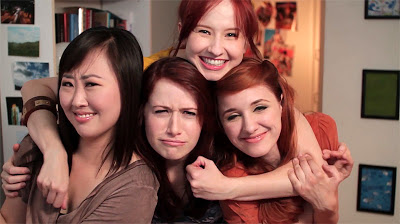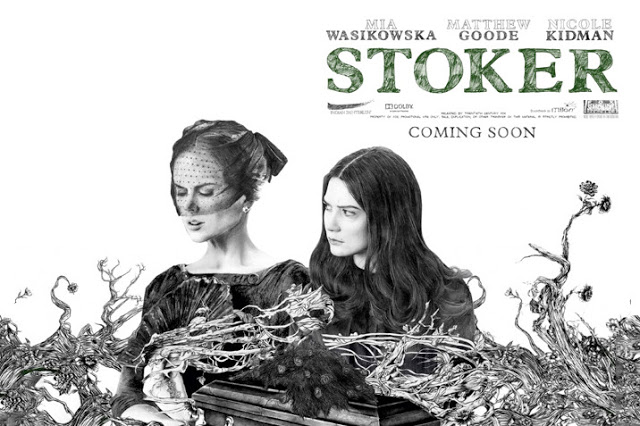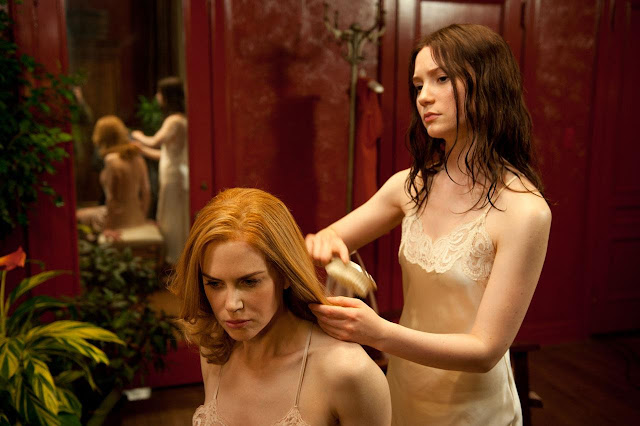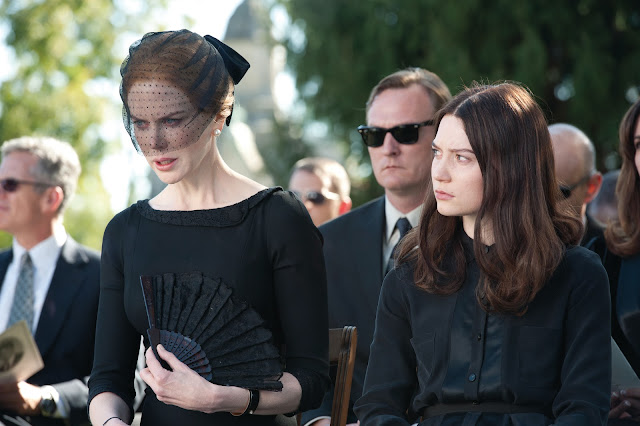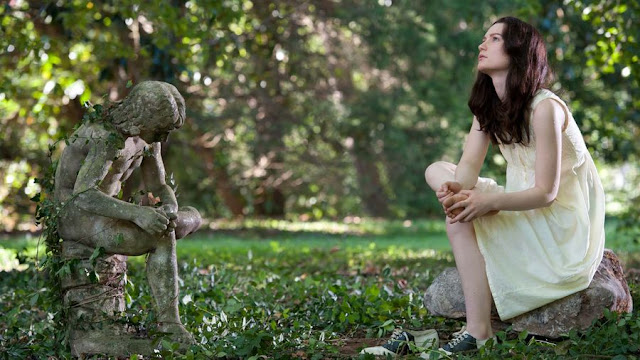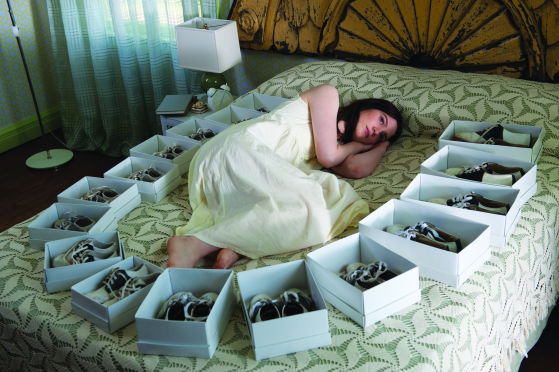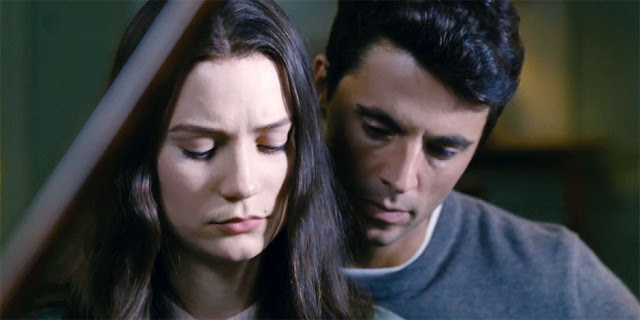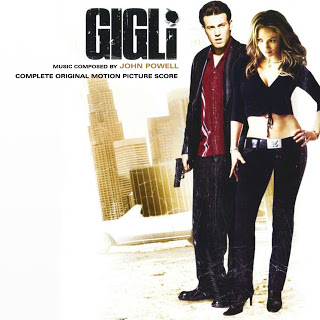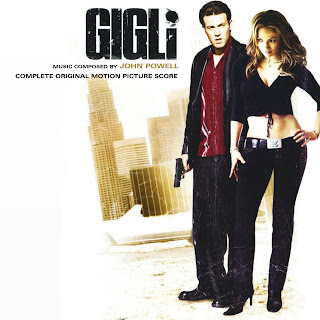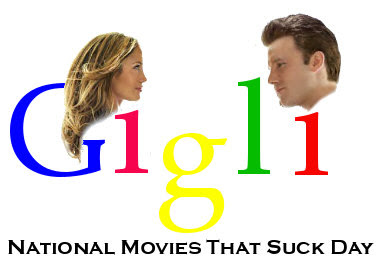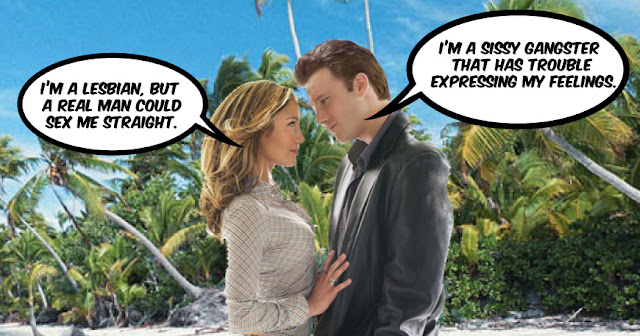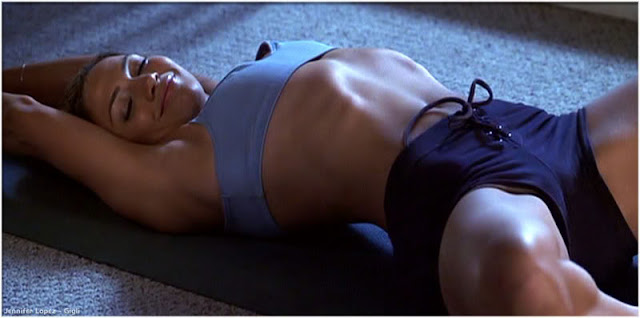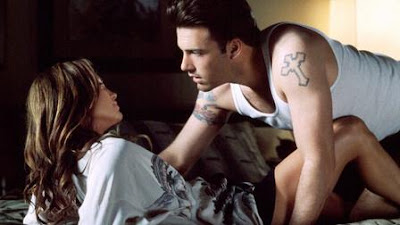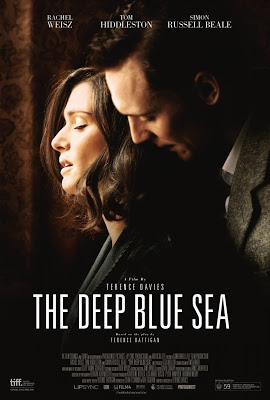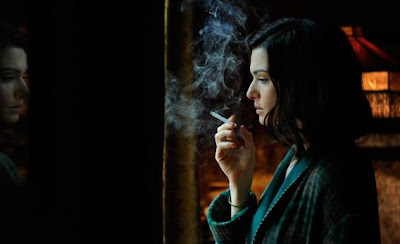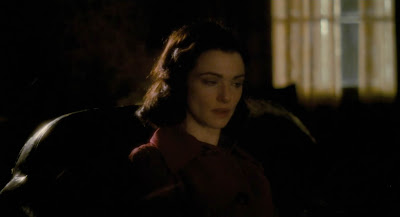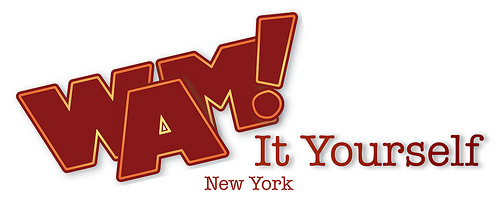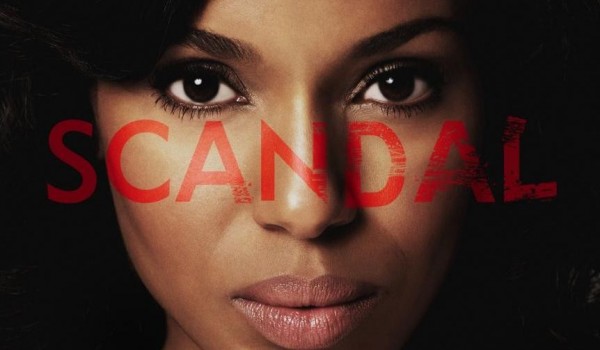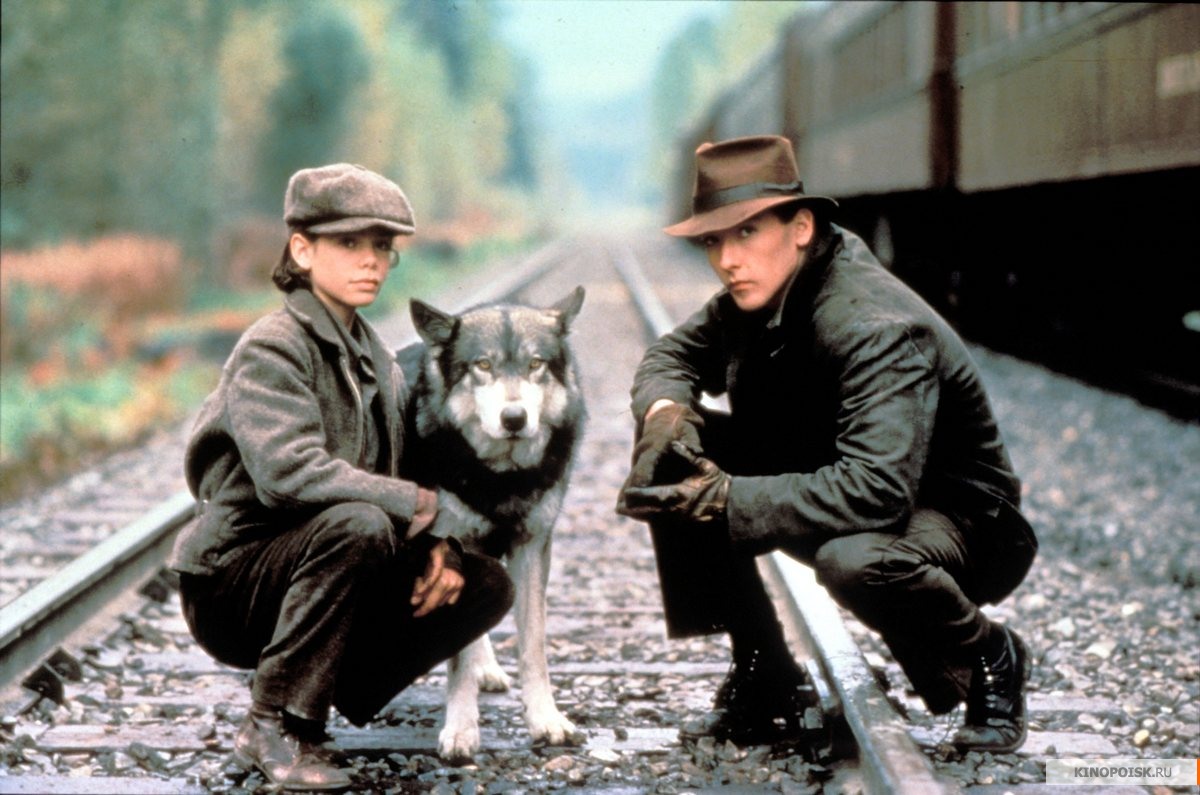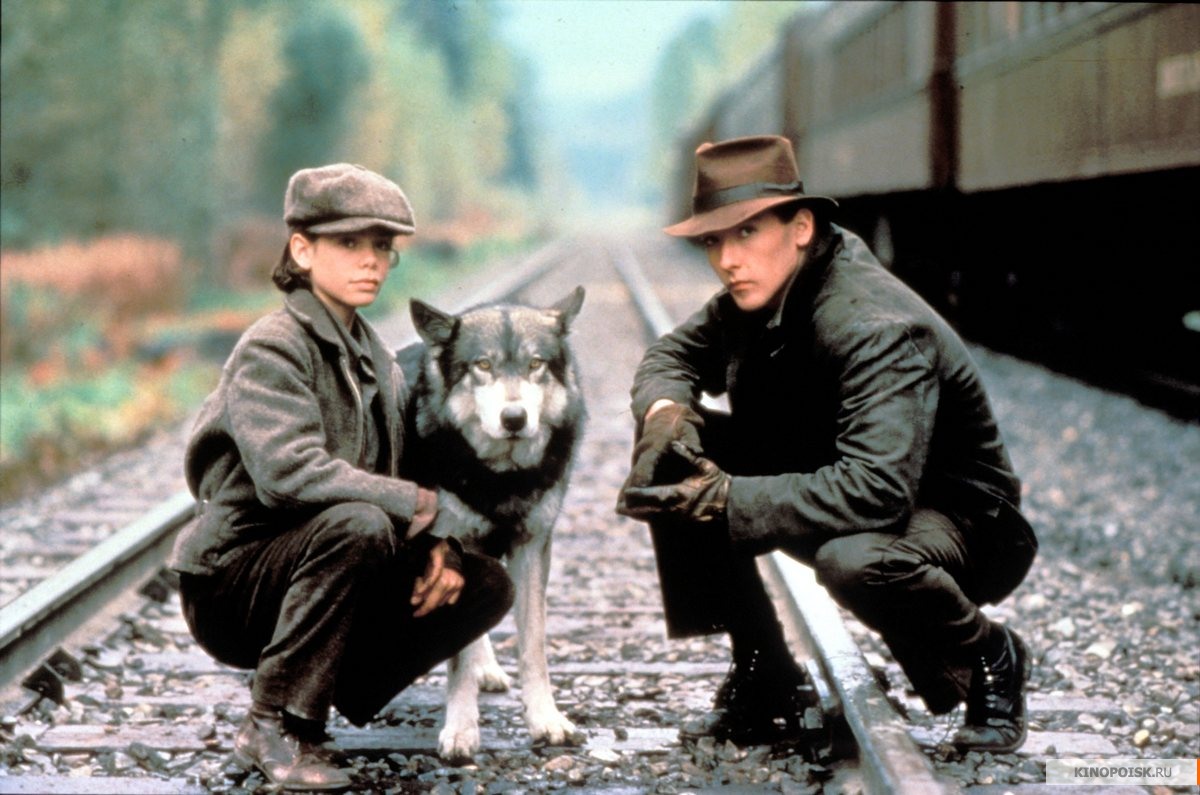 |
| Kerry Washington |
“Mammy, Sapphire, or Jezebel, Olivia Pope Is Not: A Review of Scandal“ by Atima Omara-Alwala
Many writers and film critics have written about the three usual archetypes that black women have fit into in popular culture representation. And it is through this prism Scandal is viewed. The Jezebel, who is very sexually promiscuous; the Mammy, who is the tireless devoted mother like figure regardless of all the wrong you did; and the Sapphire, a head-whipping, finger-snapping, anger-filled black woman. These stereotypes permeate all aspects of the American black women experience.
I love Community, Parks and Recreation, and Archer. They are my three favorite shows on the air at the moment. Coincidentally, each of them has an African-American woman among the main ensemble, and it makes for an illuminating comparison to look at the respective treatment of Shirley Bennett, Donna Meagle, and Lana Kane.
 |
| Sumpter, Ejogo, and Sparks |
“Sparkle: Same Song, Fine Tuned” by Candice Frederick
In
Sparkle, we have three very different sisters, Tammy aka “Sister” (Carmen Ejogo), Sparkle (Jordin Sparks), and Dolores aka “D” (Tika Sumpter), who each have a dream. D wants to go to medical school. Sister, the oldest sibling, wants to get the hell out of their strict mom’s (Whitney Houston) house, once and for all. And Sparkle, the youngest and most timid of the three, wants a chance–a chance to become a famous singer and songwriter. With encouragement from her dashing admirer, Stix (Derek Luke), Sparkle enlists her two older sisters in their own singing group so that they can each finally see their dreams come true.
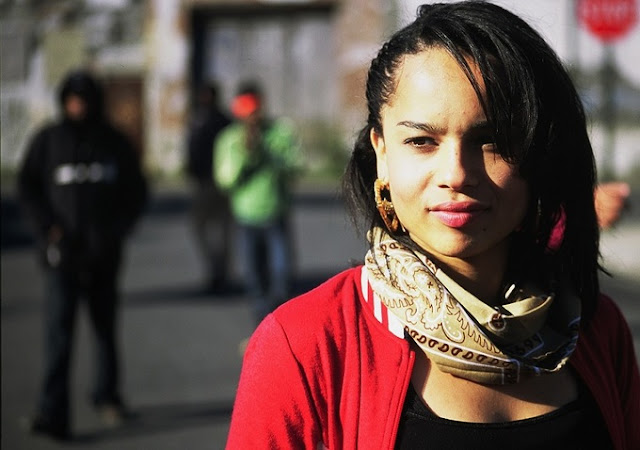 |
| Zoe Kravitz |
“A Girl Struggles to Survive Her Chaotic Homelife in Yelling to the Sky“ by Megan Kearns
Yelling to the Sky opens with a jarring scene. Sweetness is getting bullied and beaten up in the street by her classmates. Latonya (Gabourey Sidibe) taunts her for the lightness of her skin and her biracial heritage – briefly raising complex issues of race and
colorism. But she’s rescued by her older sister Ola (Antonique Smith in a scene-stealing powerhouse performance) who we see, as the camera eventually pans out, is very pregnant. This juxtaposition of a brawling pregnant woman, a fiercely protective sister, makes an interesting commentary on our expectations of gender.
 |
| Mindy Kaling |
“Thoughts on The Mindy Project and Other Screen Depictions of Indian Women” by Martyna Przybysz
A majority of feminist statements made in the show have nothing to do with race. Similar to Hannah from Girls, she is a full-figured lady, unobnoxiously proud of it (she wears dresses that accentuate her figure but rarely reveals her cleavage), and very much aware of it. She refers to herself in a belittling manner on a number of occasions, such as in episode one when she answers her phone on a date saying, “Do you know how difficult it is for a chubby 31-year-old woman to go on a legit date with a guy who majored in economics at Duke?” So, there is a healthy dose of self-awareness. Or is there?
 |
| Black Women in Hollywood Awards |
The awards luncheon, held two days before the Academy Awards, celebrates the success of black women writers, producers, actresses and other Hollywood power-brokers. Actress Tracee Ellis Ross
says, “It’s a beautiful afternoon where we’re celebrating each other and giving praise to women that don’t always get praised.”
This event by, for and all about black women in Hollywood serves as a celebration of the successes these women have had and as inspiration to the women who will come after them.
 |
| Kim Wayans & Adepero Oduye |
Now this is the kind of African American role that the Academy is deadest against honoring. A woman who doesn’t allow herself to repressed by negativity and has the strength to move forward to better opportunities with talent driving her. To the conservative viewer- it’s crucial. Not only is this young African American woman smart and gifted, she happens to be gay.
Definitely robbed of an Oscar nod, here’s hoping that Oduye nabs another pivotal role that garners attention from the snubbing Hollywood elite.
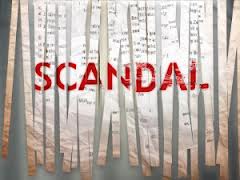 |
| Shonda Rhimes’ Scandal |
In “Sweet Baby,” Act One ends with a murder suspect walking into the office with blood literally on his hands. Act Two sees that murder investigation and raises us a POTUS (President of the United States) embroiled in a sex scandal. In Act Three, Olivia’s conservative-soldier client, the alleged murderer, gets arrested because he refuses to be “outted.” By the end of Act Four, Olivia “handles” the POTUS’s sex scandal by destroying the life of the President’s accuser/mistress who then tries to kill herself. The middle of Act Five is where we learn the biggest scandal of them all: that Olivia and the President were having an affair. By the end of the show, the stakes are raised sky high when Olivia, feeling betrayed by her married ex-lover, takes the President’s mistress on as a client.
 |
| Viola Davis & Octavia Spencer |
If Kathryn Stockett’s novel
The Help was an angel food cake study of racism and segregation in the ’60s South, the new movie adaptation is even fluffier. Like a dollop of whip cream skimmed off a multi-layered cake, the film only grazes the surface of the intersecting oppressions of race, class, gender and geohistory.
…
I maintain the novel is a good read. But its shortcomings – its nostalgia, its failure to really grapple with structural inequality, its privileging of the white narrator’s voice and its reliance on stock characters – are heightened rather than diminished in the film.
 |
| Michelle Rodriguez |
Michelle Rodriguez, famous for her roles in
Girlfight,
The Fast and the Furious series, and TV series
Lost, is a cinematic conundrum. Much like most Latina actresses, Rodriguez is typecast. Unlike those Latina actresses who are typecast as extremely feminine and sensual, Rodriguez is typecast as the smoldering, independent bad girl who doesn’t take shit from men. In her roles, Rodriguez embodies many traditionally coded masculine traits (she’s strong, aggressive, mechanically inclined, independent, physical, etc). Despite this perceived masculinity, she is not depicted as a lesbian, and her butch attributes are actually designed to accentuate her sexual appeal. Certainly, several actresses have played this same kind of role before (though, with them, there’s often skin-tight leather or vinyl in the mix), but Rodriguez consistently plays this same role over and over again.
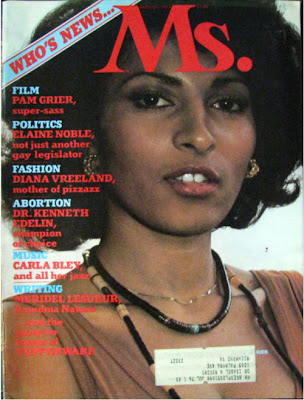 |
| Pam Grier on the cover of Ms. |
I first saw Grier in
Jackie Brown, and couldn’t understand why she wasn’t featured prominently in more films (and then I quickly remembered African American female protagonists are few and far between). It wasn’t always this way, though.
Grier’s
legacy has
lasted over four decades, but there’s something about her career that leaves me feeling unsettled, as if her filmography is indicative of larger (backward) social trends. She started out headlining action films–an amazing feat for a woman, much less a black woman in the early 1970s. A glance at a few of these films show incredibly feminist themes that are incredibly rare 40 years later. Her early films were groundbreaking, but nothing much was built after that ground was broken.
 |
| Kerry Washington in Scandal |
It’s great to see a show that’s unabashedly female-centric and more concerned with telling stories than trying to be gimmicky (and which portrays performers with far more subtlety than Smash could ever manage). There are enough shows where women are nothing more than set dressing for it not to be an issue that all six leads in Bunheads are ladies.
But it is an issue that all six leads are white.
 |
| Quvenzhané Wallis |
Last year I proudly
blogged about Octavia Spencer’s Supporting Actress Oscar win for
The Help. Happily, this is the year of milestones and giving major props to the women of color actresses on film in 2012. Making history as the youngest Best Actress Academy Award nominee, newcomer Quvenzhané Wallis has charmed audiences and critics as “Hushpuppy” in
Beasts of the Southern Wild. At 14 years old, actress
Amandla Stenberg is a seasoned veteran of television and film. Amandla broke the color barrier winning the role of “Rue” in
The Hunger Games. Starring as the lovely “Broomhilda” in
Django Unchained, Kerry Washington turned a milestone with the lead in the ABC hit show,
Scandal, as the first African-American actress to star in a network drama series in 39 years.
 |
| Yvette Nicole Brown |
A Post About Community‘s Shirley? That’s Nice. by Lady T.
In short: Shirley has a lot of anger. What makes Shirley’s anger so refreshing is that her anger is not portrayed as a sign of her blackness, or her womanhood, but as the sign of a flawed, complex human being with legitimate pain. Sometimes her anger is towards a perceived slight that has nothing to do with her (assuming that her friends judge her for her Christianity when they don’t), and sometimes her anger is completely justified (getting fed up with Pierce’s harassment and racist comments). Sometimes she’s wrong, and sometimes she’s right – just like any other person.
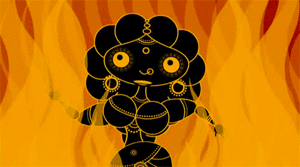 |
| Sita Sings the Blues |
Conflicting Thoughts On Sita Sings The Blues by Myrna Waldron
I love that this is a successful indie film written, directed, edited and produced by a single woman, Nina Paley, and the film is about a woman of colour. You can really tell this was a labour of love for her, and it’s an incredible achievement that one animator was able to do a feature length film on her own. The film is also explicitly meant to be feminist – in a long summary of the film that she released to the press, she described Sita Sings the Blues as “a tale of truth, justice, and a woman’s cry for equal treatment.” I hope to see more films helmed by women, and not just independent ones. I know that women of colour have an even harder time getting recognized as filmmakers, and I would like to see this same story retold from someone who grew up in Hindu culture, as opposed to a westerner.
 |
| Thandie Newton in Crash |
Deeper Than Race: A Movie Review of Crash by Erin Parks
This shift in the film that occurs shows that we are all just skin, blood, and bones, that we may all be able to “just get along.” It is hope. We see the racist officer save the Black woman (Thandie Newton) he previously assaulted from an overturned vehicle about to explode and the shop owner who shoots a young girl but does not harm her because the gun is full of blanks. Even after we discover that what Det. Waters saw at the beginning of the crime scene was his brother fatally shot (Larenz Tate), that is not where the film ends. A group of Thai captives are released, and there is another car crash.
Crash does not tell you how to think or feel. It presents characters who are blunt, who turn the other cheek, are both ignorant and educated, and all of the complicated things people are. Plainly we can see that much of the anger is triggered by fear.
 |
| The Good Wife |
So, is there a racial bias on The Good Wife? by Melanie Wanga
The Good Wife doesn’t hide behind tricks or facilities: the same complexity applies to all the characters. We are even treated with character development of women and men of color, and the show doesn’t shy away from race issues.
If the women are strongly written, women of color sadly don’t escape stereotypical representations: Latinas are ‘fiery,’ and most often than not Black women are depicted as ‘angry.’
In honor of Black History month, I’d like to focus on the portrayals and specifics of the four most important women of color on the show: Kalinda Sharma (Archie Panjabi), Dana Lodge (Monica Raymund), Geneva Pine (Renee Goldsberry) and Wendy Scott-Carr (Anika Noni Rose).
 |
| Eve’s Bayou |
Eve’s Bayou, Kasi Lemmons’s 1997 debut as a screenwriter and director, should be seen by every movie lover, every filmmaker, every storyteller. It’s a nearly perfect narrative feat, but it only generated minor waves among film critics upon its release (although Roger Ebert did name it his Best Film of 1997), and failed to garner mainstream awards nominations (it did better at the Independent Spirit Awards and NAACP Image Awards). In the intervening sixteen years I would have expected it to build up a huge following and status as a cult classic, but it is, at best, remembered as “
a contemporary classic in black cinema.“
 |
| Emayatzy Corinealdi |
Ava DuVernay’s ‘Middle of Nowhere:’ A Complicated, Transformational and Feminist Love Story by Megan Kearns
I often talk about how I want to see more female-fronted films, created by female filmmakers, including women of color on-screen and behind the camera. I want complex, strong, intelligent, resilient, vulnerable, flawed women characters. I want more realistic depictions of love: tender, supportive yet complicated. I want my films to make a social statement if possible. In Ava Duvernay’s award-winning, poignant and evocative film Middle of Nowhere, she masterfully displays all of the above.
Middle of Nowhere is such a brilliant film – quiet yet intense – I worry my words won’t do it justice.
